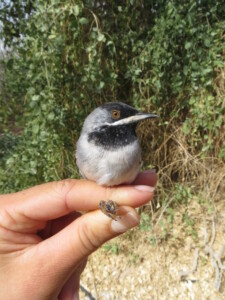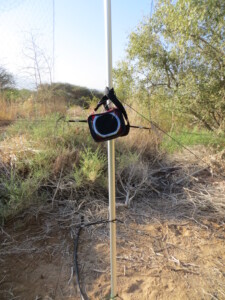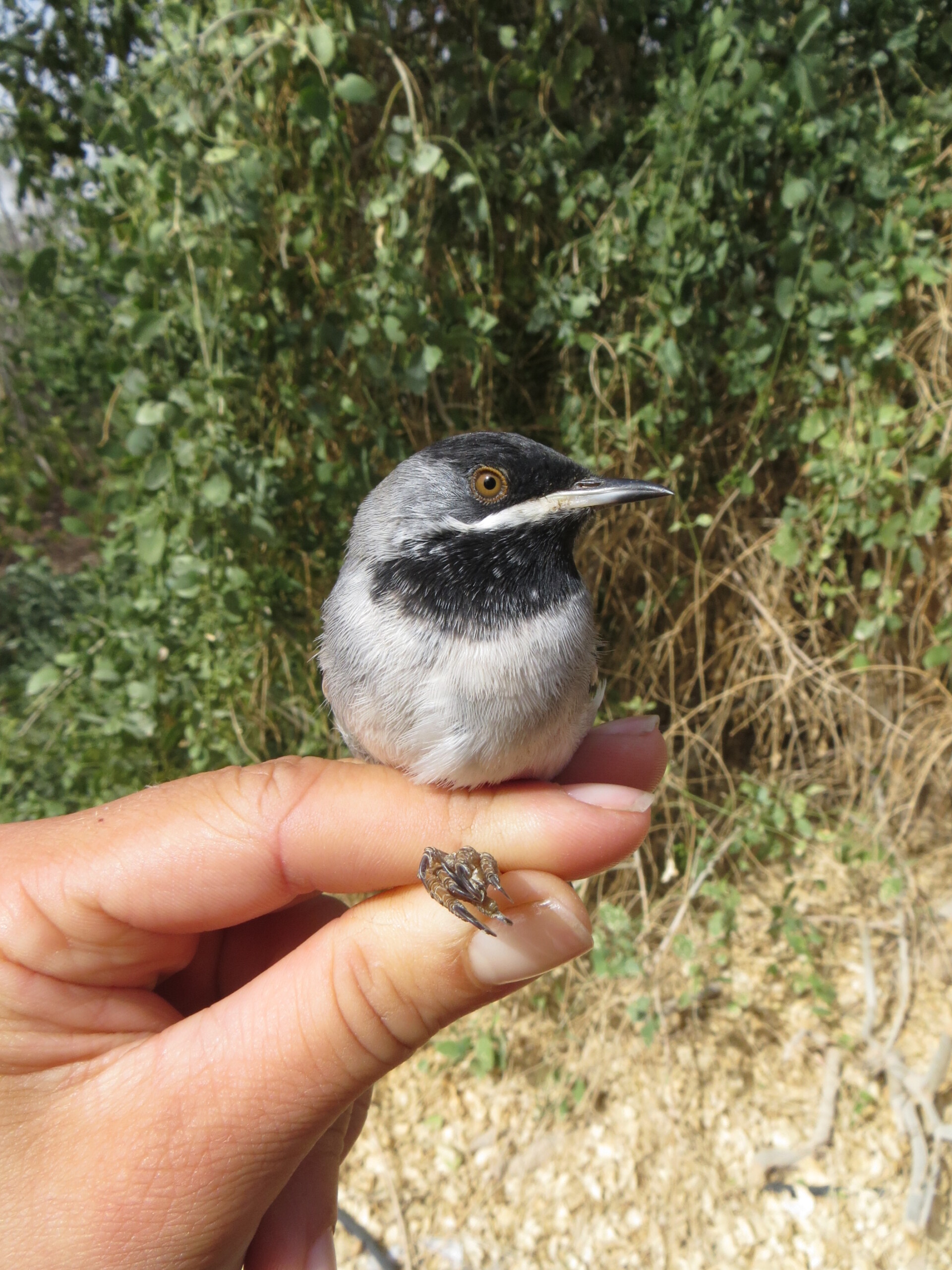
LINKED PAPER
Redistribution of songbirds within a migratory stopover site as a response to sylviid warbler song playback. Lehnardt, Y., Sapir, N. 2024. IBIS. DOI: 10.1111/ibi.13330 VIEW
Birders from northern latitudes are often surprised to hear that birds actually sing during migratory stopovers or rely on birdsong of conspecifics to select a stopover site. It makes sense given the established role of song during breeding, which is, in short – attracting females and deterring rival males – two things that are not immediately relevant during migration. But yes, birds do sing when resting from their migratory journey and respond to other individuals’ songs during migration.
People have utilized this behavior for centuries to increase hunting success. Growing numbers of researchers, birders, and nature photographers use playback to attract birds. At the same time, if you have ever broadcast birdsong in the field, you probably know that not all birds show interest, and certainly not all approach the speaker. The immediate questions are, therefore, “which birds react to birdsong?” and “under which circumstances do they do so?”. At least, these are the questions I had in mind after several years of bird ringing along the Eurasian-African migratory route. “Why do songbirds respond to birdsong?” is probably a broader, highly relevant follow-up question.
To be honest, we do not really know. However, I will try to share some things that many years of birding and scientific work have shown.
A relevant question to answer to begin with is: “why do birds sing during their migratory journey?” Understanding the role of song from the senders’ point of view can help us better understand the respondents. With some reasonable confidence, research suggests it is primarily done for practice before arriving to the breeding grounds, possibly supported by increasing sex-hormone levels. Perhaps the interaction with local singing individuals and the sense of competition when meeting other migrants gives some social encouragement and pushes them to sing even more. It is also safe to assume that predominantly individuals in good body condition have the privilege of practicing their song during the exhausting journey (similar to over-wintering birds).
So, if one is practicing its’ song, why should others care about it and approach it?

Figure 2. Stopover site © Yael Lehnardt.
There are two stages where such attraction can take place:
Selecting a stopover site – while birds are still flying and searching for a suitable site, familiar birdsong may imply a suitable site with good conditions – good enough so that individuals there spend their time singing, which is probably great for a hungry and tired migrant.
Very few studies focus on the role of vocal communication in this stage of redistribution after a site is selected. One possible explanation for birds’ attraction to song is an innate behavioral response associated with sexual attraction, representing an erroneous response at this location and month. Alternatively, birds may be attracted to song to gather social information about habitat quality, resource distribution, or to convey information regarding predation risks. All of which could increase survival. This is especially plausible at prolific stopover sites where intraspecific aggression is expected to be low.

Figure 2. Playback devices © Yael Lehnardt.
In our study, we looked at the attraction of migratory songbirds to Sylviid Warbler songs, broadcasted right after accomplishing a hefty migratory challenge – crossing the Sahara Desert. During 60 days of spring migration, we measured the abundance of 2,262 individuals of 40 species with and without song playback. We have detected a significant attraction of the species whose song was played but not of others, leading to an overall increase of 14% in the total number of captured birds when birdsong was broadcasted compared to control. This remarkable sample size allowed us to conclude with relatively high confidence that at this location, there are no strong demographic effects – no age or sex specific attraction were found. These results contradict previous studies conducted at other locations or with other species reminding us that not all species act the same and that individual birds do not behave the same all of the time. Our results support the idea that birds eavesdrop on songs even during migration when far from the breeding grounds. Seemingly, they do so not based on an innate sexual response but to exploit their surrounding habitat better. Future studies may promote our understanding of this exciting behavior by comparing responses across sites along the migration route, reactions of several taxa and responses in different migration seasons using various vocal cues (e.g., song, contact call, or alarm calls).
We do not yet have conclusive answers regarding the roles of birdsong along the entire annual cycle. Still, it seems that the answer, as always in ecology, is complex and context-specific. We learn from this and previous studies that birds have complex communication, with vocal signals shaping their migratory stopover site selection and redistribution within a selected site. The latter, the redistribution stage within a site, is rarely investigated and worth our attention. As a final note, growing noise pollution rates along migratory routes may be a stressor that birders, scientists, and conservationists should address if they wish to allow birds to gain high-quality information on their surroundings, although that is probably a topic for future blog posts…
Image credits
Top right: Sylviid Warbler in the hand © Yael Lehnardt.
Blog posts express the views of the individual author(s) and not those of the BOU.
If you want to write about your research in #theBOUblog, then please see here





